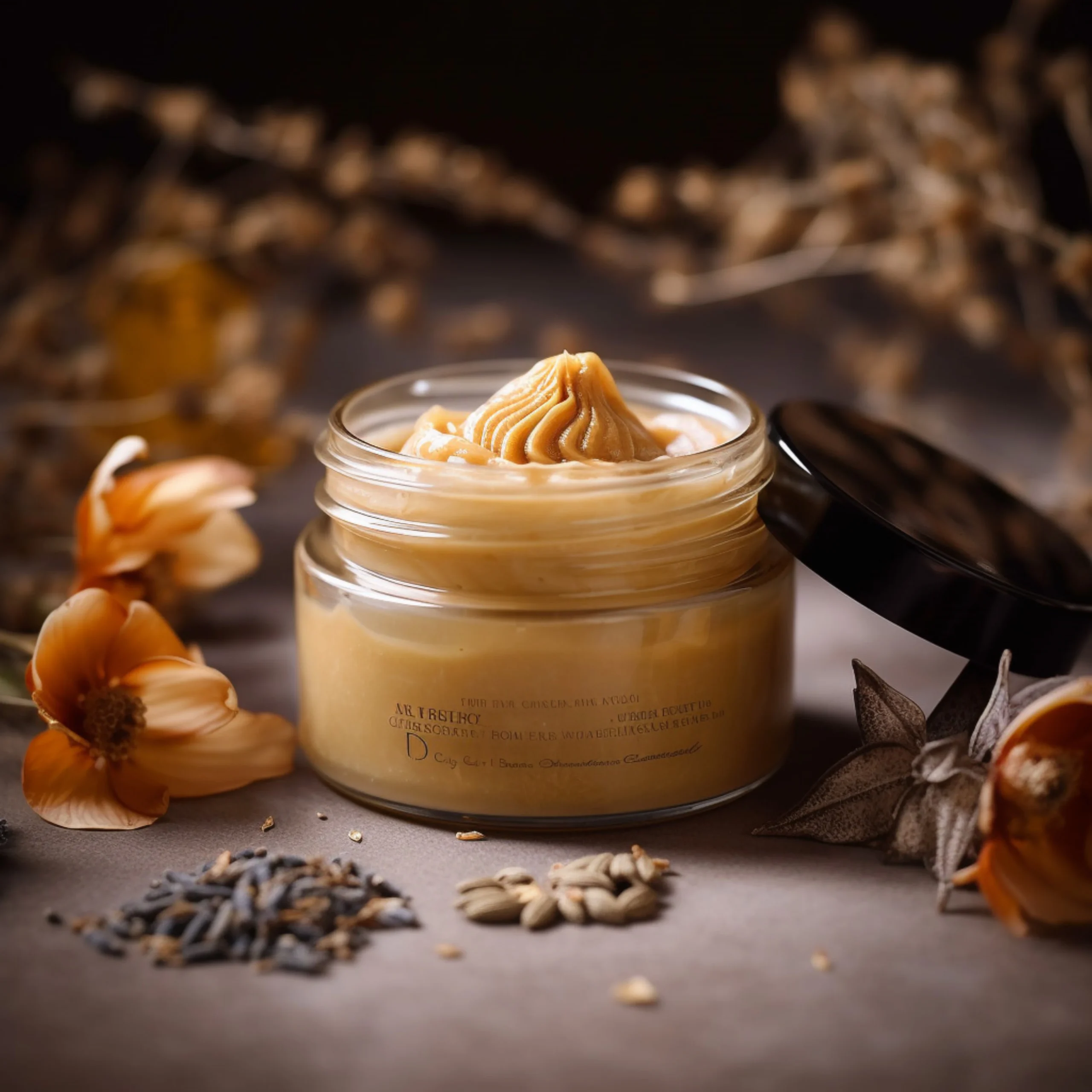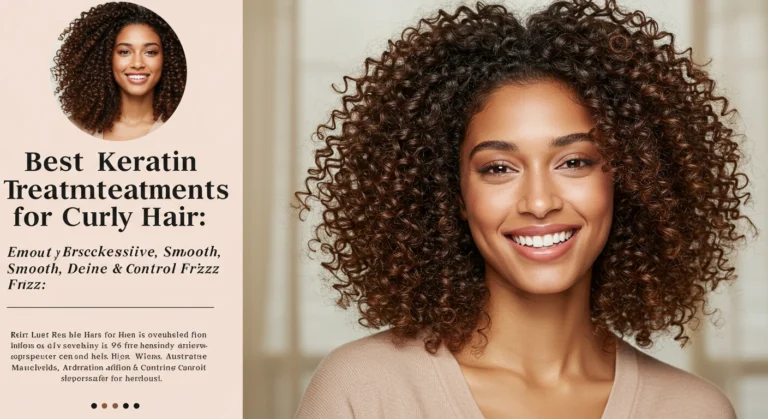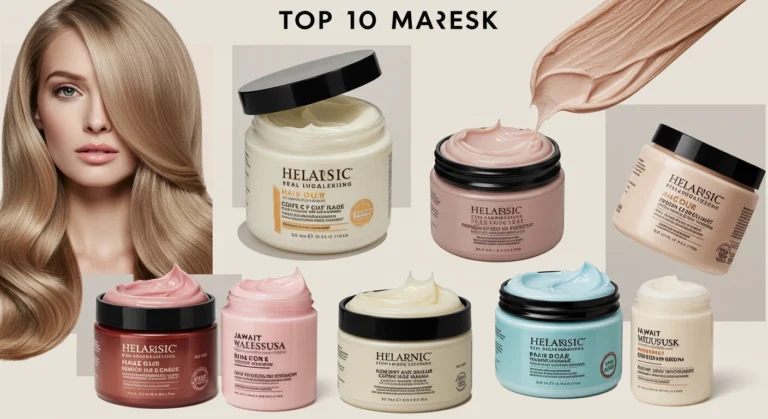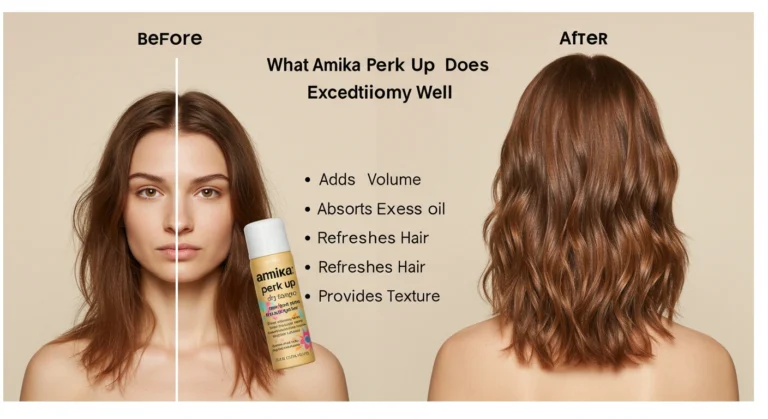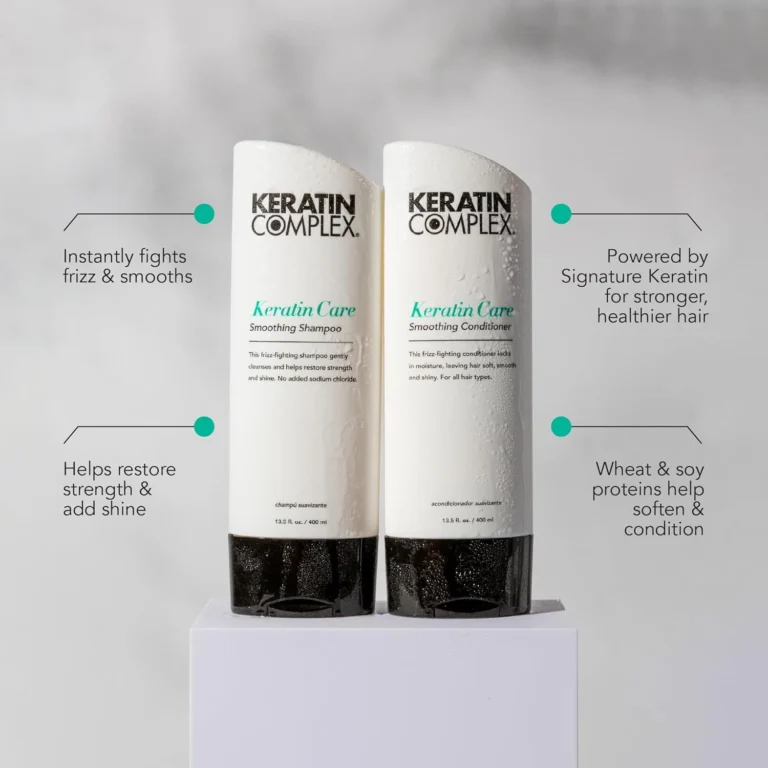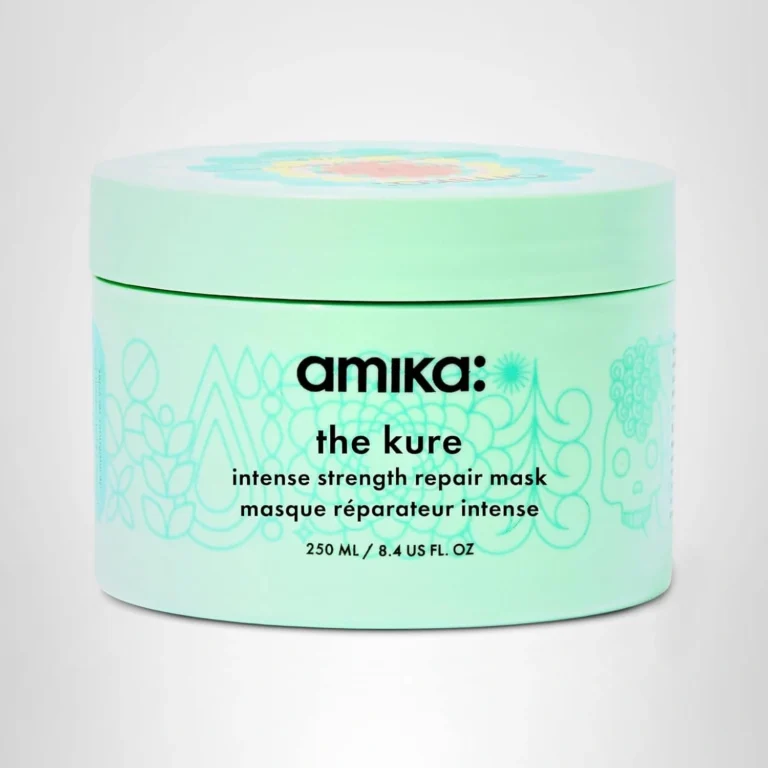Best Hair Mask in 2025
Transform Your Hair with the Best Hair Mask
Are you looking to revitalize your hair care routine? Adding a hair mask can be a game-changer. They give your hair an intense dose of nourishment and help repair and protect it from damage.

Using the best hair mask can significantly improve your hair’s health and look. With many options out there, picking the right one for your hair type is key. This way, you can get softer, shinier, and more manageable hair.
Table of Contents
Key Takeaways
- Nourish and repair your hair with a hair mask
- Choose a hair mask that suits your hair type
- Enjoy softer, shinier, and more manageable hair
- Protect your hair from damage with regular hair mask use
- Transform your hair care routine with the best hair mask
The Power of Hair Masks in Your Hair Care Routine
Hair masks are a key part of your hair care routine. They offer deep conditioning and hair repair. These masks give your hair a boost of moisture and nourishment. This can make your hair softer and easier to manage.
What Makes Hair Masks Different from Regular Conditioners
Hair masks are not like regular conditioners. They have more active ingredients like oils, proteins, and vitamins. This lets them get deeper into your hair shaft.
- More intense moisturizing
- Repair of damaged hair structures
- Enhanced shine and softness
Understanding Hair Structure and How Masks Repair Damage
Hair has several layers, with the outermost being the cuticle. Damage can lift the cuticle, causing dryness and breakage. Hair masks fill in these gaps and smooth the cuticle. This repairs damage and improves hair health.
Essential Benefits of Regular Hair Mask Treatments
Regular hair mask treatments can change how you care for your hair. They help with many hair problems, like dryness, damage, frizz, and lack of shine.
Deep Hydration and Moisture Retention for Dry Hair
A hydrating hair mask gives your hair a deep moisture boost. It helps keep your hair hydrated for longer. This is great for dry hair, which loses moisture fast.
Using a hydrating mask once or twice a week can make dry hair feel softer and easier to manage.
Strengthening and Repairing Damaged Hair Strands
Regular hair mask treatments can fix and strengthen damaged hair. Masks with protein and other nourishing ingredients fix breaks and cracks in the hair shaft. This makes your hair healthier and less prone to breakage.
Enhancing Shine and Eliminating Frizz
A shine-enhancing hair mask makes your hair look vibrant and healthy. These masks smooth the hair cuticle, reducing frizz and adding shine. Regular use keeps your hair smooth and shiny, even in humid weather.
| Benefit | Description | Hair Type |
|---|---|---|
| Deep Hydration | Intensive moisture for dry hair | Dry or Damaged |
| Strengthening | Repairs and fortifies damaged strands | Damaged or Weak |
| Shine Enhancement | Smooths and adds gloss to hair | Dull or Frizzy |
Exploring Different Types of Hair Masks for Various Hair Concerns
Choosing the right hair mask can be tough. There are many options out there. It’s key to know the different types and their benefits.
Protein-Rich Masks for Strengthening Weak Hair
Protein-rich hair masks are great for weak and damaged hair. They have keratin, collagen, and amino acids. These ingredients help fix and strengthen hair strands.
Using a protein-rich mask once or twice a week can make your hair healthier and stronger.
Hydrating Masks for Dry and Brittle Hair
Hydrating hair masks are perfect for dry and brittle hair. They provide deep moisture and nourishment. Ingredients like coconut oil, shea butter, and argan oil make your hair soft and easy to manage.
Regular use of a hydrating mask can bring back your hair’s natural shine and life.
Clarifying Masks for Oily Scalp and Product Build-up
Clarifying hair masks are great for oily scalps or product build-up. They have ingredients like charcoal, tea tree oil, and salicylic acid. These help clean the scalp and remove excess oil and residue.
Using a clarifying mask once a week can keep your scalp healthy. It prevents dandruff and itchiness.
Color-Protecting Masks for Maintaining Vibrant Hair Color
Color-protecting hair masks are for those with color-treated hair. They have antioxidants and plant extracts. These help keep your hair color vibrant and fresh.
Regular use can make your hair color last longer. It keeps your hair looking vibrant.
Selecting the Best Hair Mask for Your Specific Hair Type
Choosing the right hair mask can change your hair care game. With so many hair types and concerns, picking a mask that meets your needs is key.

Lightweight Formulas for Fine or Thin Hair
For fine or thin hair, go for lightweight hair masks. They won’t weigh your hair down. Look for ingredients like argan oil or shea butter for nourishment without the bulk.
Intensive Treatments for Thick or Coarse Hair
Thick or coarse hair needs intensive deep conditioning. Masks with coconut oil, keratin, or olive oil offer the hydration and nourishment it craves.
Moisture-Balancing Options for Curly or Textured Hair
Curly or textured hair needs moisture-balancing hair masks. They help define curls and reduce frizz by keeping moisture in. Honey, avocado, and aloe vera are great choices.
Restorative Solutions for Chemically Treated Hair
Chemically treated hair needs restorative hair repair masks. These masks have proteins and vitamins to fix damage, restore elasticity, and boost shine.
By picking a hair mask made for your hair type, you can get the most out of deep conditioning. You’ll end up with healthier, more vibrant hair.
The Best Hair Masks on the Market in 2025
In 2023, the hair care market is full of hair masks. But which ones are the best? It’s key to find masks that solve different hair problems and fit various hair types.
Premium Hair Masks Worth the Investment
Premium hair masks have advanced formulas and top ingredients. They offer deep nourishment, repair, and protection for damaged hair.
Top Features and Ingredients
These masks use luxurious ingredients like argan oil, keratin, and shea butter. They provide deep hydration and repair. For example, keratin masks strengthen hair, reducing breakage and frizz.
Real Results and Customer Experiences
Customers love the changes premium hair masks make. They report improved hair texture and reduced frizz. Many see long-lasting benefits, making these masks a good investment.
Affordable Hair Masks That Deliver Professional Results
Getting salon-quality hair doesn’t have to cost a lot. Affordable hair masks offer professional results at a lower price.
Budget-Friendly Options Under $20
Many hair masks are under $20 and still offer great value. They use effective ingredients like coconut oil and argan oil.
Drugstore Gems with Salon-Quality Formulas
Drugstore hair masks have improved a lot. Many have salon-quality formulas at a lower price. Look for ones with natural ingredients and shine-enhancing properties.
Natural and Organic Hair Mask Solutions
For a natural choice, there are many organic hair mask solutions. These masks use natural ingredients like honey, avocado, and aloe vera. They nourish and hydrate hair.
Specialized Masks for Extreme Damage Repair
Some masks are made for extreme hair damage. They have intensive repair ingredients like protein and keratin. These help restore hair health and vitality.
Mastering the Application: How to Use Hair Masks Correctly
Getting the right application method is key to getting the most out of your hair mask benefits. To get the best results from your hair care, it’s important to know how to apply a hair mask correctly.
Essential Pre-Application Preparation Steps
Before you start, make sure your hair is damp and clean. Towel-dry it so it’s damp but not dripping wet. This makes the mask spread more evenly.
Use a wide-tooth comb or a detangling brush to gently remove tangles. This makes it easier to apply the mask.
Application Techniques for Different Hair Lengths and Textures
If you have short hair, use a small amount of mask from roots to tips. For longer hair, section it and apply the mask in sections. This ensures you cover every part.
For curly or textured hair, use more mask. Work it through with your fingers or a wide-tooth comb.
Optimal Processing Time and Heat Enhancement Methods
Leave the mask on for 15 to 30 minutes, as recommended. To make it work better, use a warm towel or a hair steamer. This helps the mask get deeper into your hair.
| Hair Type | Application Tip | Processing Time |
|---|---|---|
| Dry or Damaged | Apply generously, focusing on ends | 30 minutes |
| Oily | Avoid roots, focus on mid-lengths to ends | 15-20 minutes |
| Curly or Textured | Use a generous amount, work through with fingers or wide-tooth comb | 20-30 minutes |

DIY Hair Mask Recipes Using Natural Ingredients from Your Kitchen
Discover how to make your hair healthier with DIY hair masks from home. These simple recipes use natural ingredients to nourish and repair your hair without harsh chemicals.
Avocado and Honey Mask for Deep Hydration
Avocados are full of healthy fats and vitamins, perfect for hair masks. Mixing mashed avocado with honey creates a mask that deeply hydrates. Use it once a week for softer, easier-to-manage hair.
Coconut Oil and Banana Mask for Enhanced Shine
Coconut oil and banana make a great team for shiny hair. Coconut oil’s fatty acids nourish, while bananas add moisture and softness. This mask is great for dry or damaged hair, making it look healthier and shinier.
Egg and Olive Oil Mask for Protein Boost
Eggs are packed with protein, essential for repairing hair. Adding olive oil moisturizes and protects. This mask boosts protein, helping to repair damaged hair strands. It strengthens your hair and reduces breakage.
Yogurt and Aloe Vera Mask for Scalp Health
Yogurt and aloe vera soothe the scalp, making them perfect for scalp health. This mask calms irritations and reduces dandruff. It creates a healthier scalp for hair growth.
These DIY hair masks are a natural, affordable way to tackle hair problems. Using ingredients like avocado, coconut oil, eggs, yogurt, and aloe vera can make your hair healthier and more vibrant.
| Mask Ingredients | Benefits | Best for |
|---|---|---|
| Avocado & Honey | Deep Hydration | Dry or Damaged Hair |
| Coconut Oil & Banana | Enhanced Shine | Dull or Dry Hair |
| Egg & Olive Oil | Protein Boost | Damaged or Weak Hair |
| Yogurt & Aloe Vera | Scalp Health | Irritated Scalp or Dandruff |
Common Hair Mask Mistakes That Sabotage Your Results
Many people unknowingly mess up their hair mask use. Knowing these mistakes can help you get better results from your hair care.
Overusing Protein Treatments and Causing Protein Overload
Too much protein in hair masks can make your hair brittle and break easily. Balance is key. Use protein treatments wisely, based on your hair’s needs.
Incorrect Application Techniques That Limit Effectiveness
Wrong application can lessen a hair mask’s benefits. For example, focusing on just the ends might miss scalp issues. Ensure thorough coverage from roots to tips for best results.
Using the Wrong Mask for Your Hair Type and Concerns
Choosing the wrong hair mask can be disappointing. For instance, a moisturizing mask on oily hair can make it oilier. Choose a mask that addresses your specific hair concerns.
| Hair Type | Recommended Mask Type | Benefits |
|---|---|---|
| Dry/Brittle | Hydrating/ Moisturizing | Deep hydration, reduced breakage |
| Oily | Clarifying/ Lightweight | Reduced oiliness, clarified scalp |
| Damaged | Protein-rich/ Repairing | Strengthened hair, reduced split ends |
Creating the Perfect Hair Mask Schedule for Healthy Hair
Having a good hair mask schedule can really help your hair. It’s all about knowing what your hair needs and adjusting your routine. This way, you can get the most out of your hair mask benefits and see the results you want.
Frequency Guidelines for Different Hair Types and Conditions
How often you use a hair mask depends on your hair type and condition. Dry or damaged hair might need a mask once or twice a week. This helps to deeply condition it.
Oily hair, on the other hand, might only need a mask every 10-14 days. This prevents it from getting too heavy. Normal hair usually does well with a mask once a week or every other week.
| Hair Type | Recommended Frequency | Benefits |
|---|---|---|
| Dry/Damaged | 1-2 times a week | Deep hydration, repair |
| Oily | Every 10-14 days | Balanced moisture, shine enhancing |
| Normal | Weekly or bi-weekly | Maintenance of healthy hair, prevention of damage |
Seasonal Adjustments to Your Hair Mask Routine
Your hair mask routine should change with the seasons. In dry winter months, you might need to use moisturizing masks more often. This helps keep your hair from getting too dry.
In the summer, you might want to use clarifying masks. They help remove extra oil and product buildup. Making these seasonal changes can keep your hair healthy all year round.
Expert Tips from Professional Hairstylists for Maximum Hair Mask Benefits
Expert hairstylists share their secrets for the best hair mask results. By using their knowledge with the right hair mask, you can change your hair care routine.
Strategic Combinations with Other Hair Treatments
For the best hair mask results, try combining it with other hair treatments. Using a pre-shampoo treatment before the hair mask boosts its effect. You can also layer a hair mask with a deep conditioning treatment for extra moisture and nourishment.
Post-Mask Care Techniques for Long-Lasting Results
After using a hair mask, it’s key to follow up with the right care. Dry your hair with a microfiber towel or an old t-shirt to avoid frizz and breakage. Also, apply a leave-in conditioner or hair serum to keep the mask’s benefits in.
When to Consider Professional Deep Conditioning Treatments
If your hair is severely damaged or over-processed, think about a professional deep conditioning treatment. These treatments offer deep nourishment and repair. They make your hair look healthy and vibrant. Talk to a professional hairstylist to find the best treatment for your hair.
Conclusion: Revolutionize Your Hair Health with Regular Hair Mask Treatments
Adding hair masks to your hair care routine can greatly improve your hair’s health. They help keep your hair moist, reducing dryness and brittleness. This makes your hair stronger and more resilient.
Hair masks do more than just hydrate; they also nourish and protect your hair. By picking the right mask for your hair type, you can tackle problems like damage, frizz, and color fade. This ensures your hair stays healthy and vibrant.
To get the most out of hair masks, use them correctly and regularly. This will lead to healthier, more vibrant hair. Make hair masks a key part of your hair care routine to achieve the hair you’ve always wanted.
FAQ
What is the best hair mask for dry and damaged hair?
For dry and damaged hair, choose a hydrating hair mask. Look for ingredients like argan oil, coconut oil, or shea butter. These help lock in moisture and repair damage.
How often should I use a hair mask for optimal hair health?
How often you use a hair mask depends on your hair type and condition. Most hair types do well with a mask once or twice a week. But, very dry or damaged hair might need more frequent use.
Can I use a hair mask on color-treated hair?
Yes, you can use a hair mask on color-treated hair. In fact, a color-protecting mask can keep your color vibrant and healthy. Look for a mask made for color-treated hair.
What are the benefits of using a deep conditioning hair mask?
Deep conditioning hair masks give your hair an intense dose of moisture and nourishment. They repair and restore your hair’s natural moisture balance. This leaves your hair soft, smooth, and easy to manage.
How do I choose the right hair mask for my hair type?
To pick the right hair mask, think about your hair type and concerns. For fine hair, choose a lightweight, non-greasy mask. For dry or damaged hair, go for a hydrating or repair mask. If you have oily hair, a clarifying mask might be best.
Can I make my own hair mask at home?
Yes, you can make your own hair mask at home. Use natural ingredients like avocado, honey, coconut oil, and olive oil. These can nourish and moisturize your hair. You can find many DIY recipes online.
How long should I leave a hair mask on?
The time you leave a hair mask on varies. It usually ranges from 15-30 minutes. Always follow the product’s instructions for the best results.
Can I use a hair mask on my scalp?
Some hair masks can be used on the scalp, but check the product first. If using on your scalp, be gentle and avoid sensitive areas.
Did you find this article helpful? be the first to rate us !
There are no reviews yet. Be the first one to write one.

